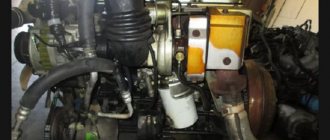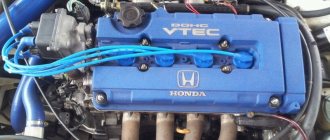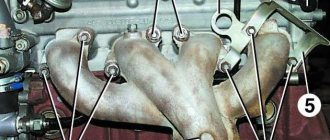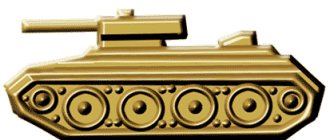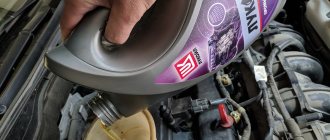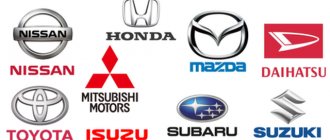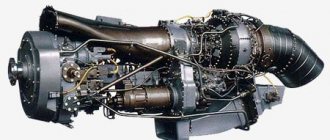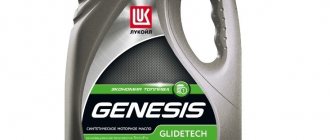About the series
The BMW 3 Series is a mid-class model created since 1975 and is one of the most popular and best-selling cars in Russia and Europe. The 6th generation of the series is currently being produced. In the fall of 2021, at the Paris Motor Show, the automaker presented a new 7th generation product, which will go into mass production next year.
The third BWM series was created in 1975. The BMW 3 Series belongs to the D-segment and is an internationally awarded model. This series of the German concern remains the most popular throughout its history. This is explained by several factors:
- The BMW 3 was initially launched as a mid-price car;
- The cars are equipped with a wide variety of engines, from low-power 1.6-liter units to 450-horsepower 4.4-liter units (M3).
- Wide choice of bodywork.
The BMW 3 Series started with the first generation sedan and convertible (E21), adding a combination version in the second (E30). Subsequently produced generations of BMW E36 (1990-2000) and BMW E46. The sixth generation offers a sedan, coupe and hatchback.
BMW 3-Series: description, engines, automatic transmission, technical specifications
The BMW 3 Series is a German compact luxury car produced by the automaker BMW AG since 1975. In 2011, the 6th generation of the model was released. The 3 Series is BMW's best seller, accounting for about a third of its sales. Every year, about 0.5 million copies of the 3 Series car leave the manufacturer's plant. About 5 of them are sold on the North American market. There is also an M version of the car - the BMW M3, which is distinguished by more power and sportiness.
Engine BMW N55B30
In 2009, BMW released a new generation of N55B30 engines to replace two entire brands of engines. The new engine had a cylinder block similar to the N54, made of aluminum. The cylinder block had cast iron liners and oil nozzles, a crankshaft weighing 3 kg, modified pistons with connecting rods. Now the length of the connecting rods was 144.35 mm. The cylinder head was modified, and the variable valve timing system on two Bi-VANOS shafts was modified. Read more about BMW N55B30 engine…
Engine BMW N54B30
The BMW N54B30 engine was used for the BMW 3 Series. It was added to the high-end 335i configuration after 2007, replacing the 330i and its 3.0-liter inline 6-cylinder engine (the model was positioned slightly lower than the BMW M3 with a 4.0-liter V8 engine). For 5 Series cars: used on the mid-range BMW 535i from 2008, replacing the 530i with 3 liter engine. Read more about BMW N54B30 engine…
BMW N53B30 engine
The BMW N53B30 engine is a version of the N53 series engine, produced in several modifications - the 2007 unit has a displacement of 2996 cc. cm, power 210 hp (with a torque of 270 Nm at 3500 rpm). In 2010, versions with a similar displacement, but with changed technical data, were launched into production: the less powerful N53B30 - 200 hp. Read more about BMW N53B30 engine…
Engine BMW N46B20
After the inline four N42B20, BMW began producing an engine with the N46 index; its two-liter modification was called N46B20. It is based on the N42B20 engine, and it seems that the new engine is no different from the old one, but this is only at first glance. In the BMW N46B20 engine, the volume was increased and amounted to 2.0 l (1995 cc). Different versions of the engine have different power from 129 to 170 horsepower on average at 6000 rpm, torque also varies and is 180 or 200 Nm at 3750 rpm. Read more about BMW N46B20 engine…
BMW N46B18 engine
The BMW N46 engine is a four-cylinder DOHC piston engine that replaced the N42 and has been in production since 2004. The N46 was produced alongside the N45 (which does not have Valvetronic) and the N43 (which has direct injection). The BMW N46B18 engine has a capacity of 1.8 liters (1796 cc), has a power of 114 horsepower (85 kW) at 5500 rpm, and a torque of 175 Nm at 3750 rpm. Read more about BMW N46B18 engine…
Engine BMW N45B20S
In 2006, the N45 engine received a new modification - N45B20S with a displacement of 1997 cc. see. The updated in-line 4-cylinder engine differs from its predecessor in power indicators - 126 kW (173 l/s). In addition to increasing technical characteristics, the main technological improvement of the engine was undoubtedly the use of the innovative Valvetronic system, which significantly increases the efficiency of the entire engine as a whole. Read more about BMW N45B20S engine…
Engine BMW M50B20
A two-liter version of the M50 engine, produced since 1990, which found its niche in 1990 with the 520i and a year later with the 320i. The cylinder diameter is 80 mm and the piston stroke is 66 mm. As a result, the engineers managed to obtain a power equal to 150 hp. Read more about BMW M50B20 engine…
Engine BMW M44B19
The BMW M44B19 engine is a 4-cylinder engine that replaced the M42 engine and was produced from 1996 to 2001 at the Steyr plant. This power unit took a leading position in the BMW four-cylinder engine program and, compared to the M42, the M44 featured many design changes both in the engine itself and in the control system and exhaust system. Read more about BMW M44B19 engine…
BMW N43B20 engine
The BMW N43B20 engine is a four-cylinder in-line petrol unit produced by BMW from 2007 to 2011. There are three versions of the N43 engine, which have gained popularity and recognition among car enthusiasts around the world. Unlike its predecessor, the N42 engine, the new BMW N43 engine has direct fuel injection and a Valvetronic valve lift system. The engine was produced together with such units as N45 and N46, but in terms of demand it surpassed its successors during this period of time. The design of this engine allows for optimally high levels of torque combined with efficiency and environmental friendliness - a combination that is not always easy to achieve. Read more about BMW N43B20 engine…
Engine BMW M54B30
This engine was created in 2000 on the basis of the M52TUB28 engine and was first installed on restyled versions of the BMW E46 and BMW E39. In addition to the M54B30, the range of new engines includes M54B22, M54B25 and S54B32. As in the M52B28TU internal combustion engine, the cylinder block is made of aluminum alloy, but using cast iron liners. In 2004, BMW presented the world with a new line of N52 engines, which gradually began to replace the M54 line. In 2006, the M54B30 internal combustion engine completely left the production line. But in 2006, based on the M54, one of the most successful turbocharged BMW engines, the N54, was created, which was massively installed on cars with the 35i index. Read more about BMW M54B30 engine…
BMW N42B18 engine
BMW N42B18 engines are single-row 4-cylinder engines with a DOHC gas distribution system. The predecessor of this model of units were engines of the M43 series. The main feature of the N42B18 is two overhead camshafts, as well as the innovative VANOS system. This technology has made it possible to reduce fuel consumption and reduce exhaust gas pollution. And Valvetronic technology helps increase power by optimizing the filling of the cylinders with the mixture. Read more about BMW N42B18 engine…
Engine BMW M52B28 / M52TUB28
The senior representative of the M52 series of engines is the BMW M52B28 engine, which since 1995 has been installed on BMW models in the E36, E38, E39, E46 and Z3 bodies with the index 28i. The cylinder block of the engine supplied to the European market is made of aluminum, the cylinders are coated with Nikasil. They have the same diameter as the M52B25 engine, a crankshaft with an increased stroke, the cylinder head of this engine is from the M50B25TU, and the injectors have a capacity of 250 cm3. In 1998, a modification of the engine appeared, which received the index M52B28TU, which had cast iron liners and a double vanos, different camshafts, a DISA intake manifold and an electronic throttle. In 2000, the M52V28 engine began to be replaced with the M54V30 engine, and its production was completely stopped a year later. Read more about BMW M52B28 / M52TUB28 engine…
Engine BMW M20B25
M20B25 - 2.5 liter engine without catalytic converter. It was originally released with a carburetor, and over time it was equipped with a Bosch fuel injection system. The engine management system used was Bosch Motronic 1.1/1.3. In 1987, the B25 was modernized and the power was increased. Read more about BMW M20B25 engine…
Engine BMW M52B25/M52TUB25
The BMW M52 engine was created in April 1994. This is the second evolution of BMW's 24-valve engines and is based on the M50TU. The goal of technical development was to reduce weight, emissions and improve torque figures. The most important characteristic of the M52 engine compared to its predecessor M30 and M50 is the aluminum crankcase with wear-resistant Nikasil coating on the surface of the cylinders (with the exception of models for North America, which retained the iron block due to the higher sulfur content in the fuel), which is almost 50 % lighter than M50 cast iron block. This resulted in a reduction in engine weight from around 190 kg (M50) to 160 kg (M52). Read more about BMW M52B25 / M52TUB25 engine…
Engine BMW M50B25/M50B25TU
In 1990, the in-line 6-cylinder engine M20B25 from BMW was replaced by a new, much more powerful and advanced M50B25 (popular name - “slab”). The unit belongs to the new M50 family, the same line includes M50B20, M50B24, S50B30, S50B32. The main difference between the M50 and M20 engines is the cylinder head. In the new engine, the cylinder head is already two-shaft, has hydraulic compensators, the number of valves is 24. The gas distribution mechanism in the M50 engines is now driven by a chain. According to the manufacturer, it lasts approximately 250 thousand km, most often longer. Read more about BMW M50B25 / M50B25TU engine…
Source
Engine
BMW 3 Series, in comparison with its analogues, is distinguished by a colossal variety of gasoline and diesel engines. Cars produced before 2000 were equipped with 76-321 hp engines, but later their power increased to 432 hp. (4-liter V8) in the fifth generation. The BMW M3 GTS model (450 hp) - 4.4 liters - boasts the highest engine characteristics. The least powerful remains the BMW 318i, equipped with a 136-horsepower 1.5 liter engine, which until recently remained in demand in the domestic used car market. Among its advantages is low fuel consumption, which is 3.8-5.5 liters per 100 km.
The most powerful engine options (V6 onwards) are often found with xDrive all-wheel drive, which is found only in the 325i, 330i and 330d. The operation of the drive itself, fully electronically controlled, does not cause any reservations. However, it's worth remembering that its presence increases the cost of servicing - not only are there more items that can break (like the transfer case or front differential), but it's also much harder to get to the engine and gearbox underneath since the components are interfaced with xDrive.
Already with the E46, the Bavarian brand moved away from combining the digital sign with engine power
- The 316i was equipped with a 1.8 or 1.9 liter engine;
- 320i and 323i – 2.2 and 2.5-liter units, respectively.
The 4-cylinder versions of the engines were mostly combined with a sedan body and a manual transmission. The disadvantage of the 1.9 engine is its significant fuel consumption. After 2001 it was replaced by a 1.8-liter unit built from scratch. The best offer among gasoline varieties is the 318i with a 2.0 4-cylinder engine producing 143-150 hp, which should not be confused with its 6-cylinder in-line counterpart. It's worth noting that despite having fewer cylinders, the R4 has better acceleration and more torque. However, all the larger 6-cylinder engines - from 2.2 to 3.0 - work great. They can be safely recommended, especially if you are planning a regular trip with high mileage.
BMW N54 (335i)
This engine earned the title of “Best Engine of the Year” in 2007 and 2008. No wonder, the 3-liter 6-cylinder BMW engine develops a power of 306 hp, and thanks to energy-saving technologies, it consumes less than 9 liters of fuel per 100 km. This is already the limit of the diesel engine parameter.
The power unit was used not only in the BMW 3-Series, but also in the BMW 5, 7, X3, X5, X6 and Z4. In the BMW 3-Series, this engine is most often found in coupes and convertibles and, as a rule, with an automatic transmission.
Interior
Despite the price point, the interior is aesthetically pleasing, combining elegant design and a modern dashboard. You can observe attributes that are present in both the budget 1st series and the 5th. However, together they harmoniously fit into the unified style of the “troika”. Compared to the previous 5th generation, the wheelbase was increased by 5 cm, which made it possible to expand not only the body, but also the interior. In particular, the driver's headroom has been increased. At the same time, the interior itself received an additional 20 liters, which now amounted to 480 liters.
In general, passengers did not receive additional volume, and legroom increased only by 1.5 cm. However, the manufacturer offers an additional option for the “Sixes” on a paid basis, for which you can get warehouse rear seats.
Engine M54B30
Basic information about the engine
Gasoline engine with a precise volume of 2979 cubic centimeters. Produced since 2000. The engine has an in-line structure with 6 cylinders made of aluminum. The diameter of each is 84 millimeters. The engine has 24 valves, an injection system. The piston stroke, in comparison with the previous version, has been increased to 89.6 millimeters. The compression ratio remains the same - 10.2 to 1. The engine has a power of 231 horsepower. It is recommended to fill with 95 fuel. The motor meets environmental standards Euro 3 - 4. Torque is 300 Nm. The engine weight is about 130 kilograms.
Average consumption on the highway is 7 liters per 100 kilometers, in the city about 14 liters, in mixed mode the engine consumes up to 9.8 liters. For 1 thousand kilometers, the engine can consume up to 1000 grams of oil. The engine holds up to 6.5 liters of oil. Replacement needs to be done every 10 thousand kilometers. The engine operates at a temperature of 95 degrees. The engine resource, in comparison with the previous version, is longer, about 300 thousand kilometers. With tuning it will be possible to increase engine power to 450 horsepower.
M54B30 engine characteristics
Advantages
The senior engine from the line in the M54. The M52B28TU was taken as the basis. The cylinder block is made of aluminum. Cast iron sleeves are used. The crankshaft is made of steel and has a stroke of 89.6 millimeters. Connecting rods with a length of 135 millimeters are also used. The changes also affected the pistons, which are lighter. Its height is 28.32 millimeters. The cylinder head remains the same, a double vanos with DISA is used. The difference from older versions of M54 lies in the short channels. The changes affected the camshaft, with a rise of 9.7 millimeters. An electronic throttle is used. The control system is Simin MS45. This type of engine was used for cars with the 30i index.
In 2004, BMW released a new in-line engine, which took a leading position. In 2006, production of the M54B30 ceased.
Flaws
The M54B30 has disadvantages typical of most pre-2006 engine models from BMW.
Electronics
When it comes to electronic components, it can be argued that the “troika” is practically not inferior to the 5-series line. This is partly due to mass demand, which is supported by car enthusiasts who want to get the most out of their options. BMW 3 Series have the following set of electronics:
- A standard head unit that provides full access to the car's multimedia system. Runs OS iDrive.
- All-weather Sport floor mats with heating function.
- BMW Click & Drive system with bracket, which enables fast and safe charging of batteries of portable devices.
- Snap-In adapter in Basic, Music, Media, Connect and Connect Universal versions, which allow you to perform full-scale work with a smartphone, laptop, navigator or recorder, replacing a computer.
- Navigator with the ability to update GPS maps.
- Heated windows, steering wheel and optical instruments.
- Complex of security systems.
The general set of functional devices depends on the configuration in which a particular model is produced. F50 SE sedans have a minimum set of electronic components, which necessarily includes a standard head unit, a heated windshield and a BMW Click & Drive module.
Main characteristics and features
Among the cars of the 90s, there are many copies with very weak equipment. Only power steering, ABS and airbag were standard. Especially in the 318i version, air conditioning (even manual) is a rare addition. During the production cycle, the equipment was systematically enriched, and cars with generation changes already had a number of solutions to make driving comfort more enjoyable and improve functionality, including a navigation screen on the center console, xenon headlights and seats with memory settings.
There are also unique solutions, for example, the E46 is one of the first cars with factory stability control, first called ASC and then DSC. The engine can be put on hold by pressing the button on the center console once, or switched off completely by holding the button down for about five seconds. Although not fully functional DSC, the E46 remains stable and performs great provided the suspension is not too playful and the tires are new.
In later examples, a corner brake control system was also offered as an extra cost, which brakes the wheel in the corner, losing traction (works in conjunction with DSC).
Engines:
- gasoline: 1.8-3.2 (105-360 hp)
- diesels: 2.0-3.0 (115-204 hp)
Body options:
- F30, sedan
- F31, station wagon
- F34, hybrid
There is also a Chinese version of the official assembly with an extended body - F35.
Dimensions:
- wheelbase: 273 cm,
- length/width/height: 448/174/141 cm
Trunk volume:
- sedan: 440 l
- station wagon: 435-1345 l
- coupe: 410 l
- convertible: 300 l
M57D30 engine characteristics
| Production | Steyr Plant |
| Engine make | M57 |
| Years of manufacture | 1998-2012 |
| Cylinder block material | cast iron aluminum (M57TU2) |
| engine's type | diesel |
| Configuration | in-line |
| Number of cylinders | 6 |
| Valves per cylinder | 4 |
| Piston stroke, mm | 88 (M57D30) 90 |
| Cylinder diameter, mm | 84 |
| Compression ratio | 16.5 (TOP) 18 |
| Engine capacity, cc | 2926 2993 |
| Engine power, hp/rpm | 184/4000 193/4000 197/4000 204/4000 218/4000 231/4000 235/4000 272/4400 286/4400 |
| Torque, Nm/rpm | 390/1750-3200 410/1750-3000 400/1300-320 410/1500-3250 500/2000-2750 500/1750-3000 500/1750-3000 560/2000-2250 580/1750-2250 |
| Environmental standards | Euro 3 Euro 4 (M57TU2) |
| Turbocharger | Garrett GT2556V Garrett GT2260V BorgWarner BV39 + K26 BorgWarner KP39 + K26 |
| Engine weight, kg | ~200 |
| Fuel consumption, l/100 km (for 335d E90) - city - highway - mixed. | 9.75.6 7.1 |
| Oil consumption, g/1000 km | up to 700 |
| Engine oil | 5W-30 5W-40 |
| How much oil is in the engine, l | 6.75 (M57) 7.5 (M57TU2) 8.25 (M57TU) |
| Oil change carried out, km | 7000-8000 |
| Engine operating temperature, degrees. | ~90 |
| Engine life, thousand km - according to the plant - in practice | — 500+ |
| Tuning, hp — potential — without loss of resource | 250+ — |
| The engine was installed | BMW 325d/330d/335d E46/E90BMW 525d/530d/535d E39/E60 BMW 635d E63 BMW 730d E38/E65 BMW X3 E83 BMW X5 E53/E70 BMW X6 E71 Range Rover |
Specifications
The BMW automaker is known for producing a large number of car modifications, each of which offers a separate line of additional options. All previously and currently produced generations of the 3rd Series are available in the following trim levels:
- One of the most popular trim levels available on the used car market, standard equipment on the SE line is extremely generous. Single on the outside, 17-inch alloy wheels and front fog lights provide a premium look, with practical additions such as rain-sensing wipers and rear parking sensors. Inside, the SE version has dual-zone air conditioning, a leather-wrapped steering wheel and shift lever, and cruise control. Of course, it also features BMW's highly reliable iDrive system, which allows you to control multimedia settings such as Bluetooth and DAB radio from the 6.5-inch touchscreen. New for the BMW F30 3 Series, stop/start is a standard feature.
- The BMW 3 Series EfficientDynamics model shares its specification with the SE model, but instead uses smaller 16-inch alloy wheels to improve efficiency. The 3 Series also features improved gear ratios and the addition of an ECO PRO control mode to give the 3 Series superior fuel economy.
- An upgrade to the BMW 3 Series Sport trim to add a dynamic edge to both the interior and exterior of the 3 Series. Another popular trim, notable additions include distinctive 17-inch dual-spoke alloy wheels and black trim with mirrors and surrounding glass. Inside, there are similar upgrades, with sport seats and a sport leather steering wheel, in addition to an automatic dual-zone air conditioning system. The gloss black dashboard gets red highlights for an extra sporty feel.
- Luxury Line. Setting the luxury standard, the BMW 3 Series Luxury wants very little. Nappa leather is used extensively throughout the cabin, making the luxury feel truly special. Full leather seats are connected by a leather steering wheel and gear lever. Premium touches extend to the outside, too, with 18-inch alloy wheels and chrome trim on the exhaust, grille and bumpers.
M-Sport. One of the highest trim levels of the BMW 3 Series. M-Sport takes visual cues from the performance-based BMW M3. The 18-inch M-Sport light-alloy wheels are joined by a set of M aerodynamic body kits and lower the sports suspension for a dynamic edge. The inside boasts full leather upholstery to complement the equipment found on the SE trim.
BMW 3 series / BMW 3 series
3 series: parameters, tests (test drive, crash test), reviews, car dealerships, photos, videos, news.
BMW 3 series
- production began in 1998. The combination of style and technology 3 series, created by BMW, has proven itself in the market and has stood the test of time.
Among the existing basic colors of the 3 series, you can easily find one that suits you, but most likely you can choose it to order. We most likely do not have all the configurations of this BMW 3 series model, among which are various assembly options for the 3 series: the gearbox can be automatic or manual, leather interior trim or wood inserts, wheels and other additional elements of the 3 series body, which are certainly will be reflected in the price of 3 series. The technical characteristics are good, but do not forget about the safety of the 3 series or the engine capacity, which will then make itself felt in terms of operating costs in the future, as well as 3 series repairs and maintenance with a warranty period. Since the purchase is made not for several months, but for several years, so consider for yourself what you will do in the summer and winter, what trips you will make in the 3 series
. The table below shows a comparison of several 3 series configurations, the parameters include: what are the overall dimensions of the 3 series, what is the fuel consumption in the city, highway or mixed, engine size, maximum speed and acceleration time to 100 km/h, curb or gross weight 3 series, wheelbase, front and rear wheel tracks, transmission type (gearbox/gearbox), what drive, tire size, what power or torque and what price. In addition to all the numbers, you can read reviews of car owners about the 3 series, watch videos or news, tests (test drive, crash test).
Appearance
The 6th generation BMW 3 Series models have received an updated body, in which the familiar features of the concern are recognizable. In particular, the large radiator grille and embossed hood partly emphasize the style of previous generations. At the same time, narrow headlights of a new shape surprisingly appeared. Another innovation concerns the profile - the line smoothly transitions from the hood to the thin A-pillar of the roof. In this regard, the F30 sedan is very similar to the Z4 coupe.
Among the traditional features characteristic of models of all generations is the trunk lid, which smoothly merges into the rear roof pillar, similar to the hood. The stepped headlights fit perfectly into the design of the rear of the car. Feed deserves the most attention. They probably received more attention after the failed attempt with the E90. In general, the sixth generation is again ready to delight BMW fans with modernity and prestige.
Car interior
Judging by the reviews of the car in this series, you can understand that almost everyone likes the interior. The panel is unfolded, making it comfortable not only for the driver, but also for the passenger. Only those in the back row will have to make room. This is understandable, because the car had the goal of becoming a sports car, not a family car. Incredibly large trunk - 405 liters. And this is provided that the body is a coupe. On sports cars the volume is usually much smaller.
The M3 was developed primarily for touring car racing. But BMW designers did not ignore the issues of everyday use of the car. The result is a successful combination of comfort and excellent dynamics.
The predecessor (version M3 E30) was clearly not intended to carry passengers in the rear seats - they were very cramped there. The new modification managed to get rid of this problem; in the coupe, passengers in the back seat feel relatively comfortable.
A four-door sedan is the dream of many drivers who want everything at once. The result is an excellent car that combines all the advantages of a sports car and a family car. In the sedan's interior you can find decorative wood inserts and leather seats made specifically for this series.
The BMW M3 E36 became the most popular in its time. A large number of debuts at various exhibitions, awards and titles - all this was received by the Bavarian automaker after the release of this particular model.
Read: BMW M6 Coupe (F13) review
